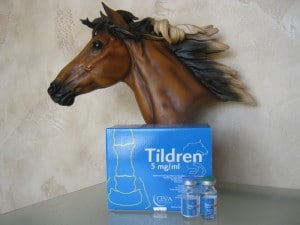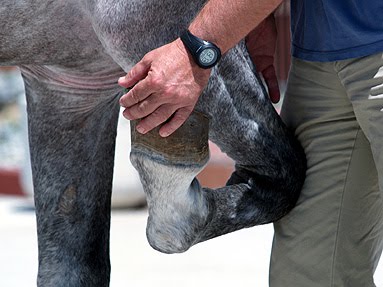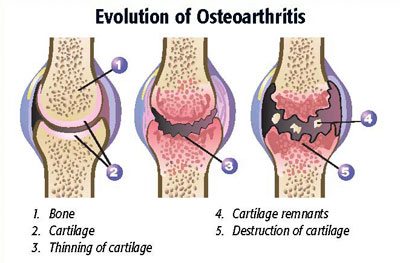Back in 2003, a class of drug that has found wide use in the human medical field was introduced into the equine world. The class of drugs are called bisphosphonates, and the generic name of the drug used in horses is tiludronate. You’ve probably heard of it – it goes by the trade name of Tildren.® And, in the years since its introduction, the horse world – especially the performance horse world – has subsequently gone a bit mad.
Bone is an active tissue. New bone is constantly being made and removed (that’s one reason that you can break your arm and it can heal). In normal bone metabolism, the formation and removal of bone gone hand-in-hand. It’s because bone is an active tissue that bisphosphonate drugs can have an effect.
 Here’s what the drugs do. Bisphosphonates – which, somewhat frighteningly, were first created as industrial chemicals to prevent corrosion, over a century ago – inhibit the cells that remove bone. These cells are called osteoclasts. The drugs work by attaching to active sites on bony surfaces, where bone cells are hard at work. When the osteoclasts began to remove bone that has the drug attached to it, the drug gets in the way of the osteoclasts’ ability to do their job. Bisphosphonate drugs interfere with the formation of new osteoclasts, and promote the death of active ones. This interference with normal bone metabolism has the effect of reducing the formation of new bone, and also of slowing bone loss. Changes in bone removal also influence new bone formation, so when bone removal decreases, so does bone formation.
Here’s what the drugs do. Bisphosphonates – which, somewhat frighteningly, were first created as industrial chemicals to prevent corrosion, over a century ago – inhibit the cells that remove bone. These cells are called osteoclasts. The drugs work by attaching to active sites on bony surfaces, where bone cells are hard at work. When the osteoclasts began to remove bone that has the drug attached to it, the drug gets in the way of the osteoclasts’ ability to do their job. Bisphosphonate drugs interfere with the formation of new osteoclasts, and promote the death of active ones. This interference with normal bone metabolism has the effect of reducing the formation of new bone, and also of slowing bone loss. Changes in bone removal also influence new bone formation, so when bone removal decreases, so does bone formation.
 In humans, bisphosphonates are extremely useful drugs, and are often prescribed for conditions featuring loss of bone, such as osteoporosis in women, certain types of cancer associated with bone loss, or Paget’s disease (a disease that usually has a genetic basis, and which is characterized by the excessive breakdown and formation of bone). If you want to learn more about bisphosphonates drugs in general, you can if you CLICK HERE.
In humans, bisphosphonates are extremely useful drugs, and are often prescribed for conditions featuring loss of bone, such as osteoporosis in women, certain types of cancer associated with bone loss, or Paget’s disease (a disease that usually has a genetic basis, and which is characterized by the excessive breakdown and formation of bone). If you want to learn more about bisphosphonates drugs in general, you can if you CLICK HERE.
Not all bisphosphonates are equal, however. Tiludronate is one of the older members of this group of drugs. Frankly, it doesn’t work nearly as well as do newer drugs. In fact, it is as much as 10,000 times less effective than the drugs that are currently used in people. Not only doesn’t it work as well, tiludronate is also less safe than are newer members of the bisphosphonate group. And that’s probably why, in humans, it’s not prescribed anymore. In fact, the company that made the tiludronate for humans, Sanofi, took if off the human market in the US in 2012.
 So here’s what’s going on in horses. In 2003, in France, they did a study on horses that were said to have navicular disease. They did a trial, and they concluded that some of the horses who got the higher of two doses of the drug got better 2 – 6 months after getting the drug. You can CLICK HERE is you want to see a link to the abstract. Based on this study, the drug was approved for use in horses, initially in Europe only, but as of August 2014, in the United States as well, along with a similar drug calles Osphos® (clodronate disodium). And, frankly, when the drug first came available, a lot of people in the horse world were pretty excited, because, 1) We don’t have any really good treatments for navicular disease in horses, and 2) Everybody is always looking for hope. As a result, everybody said it was good, and they called it Tildren.®
So here’s what’s going on in horses. In 2003, in France, they did a study on horses that were said to have navicular disease. They did a trial, and they concluded that some of the horses who got the higher of two doses of the drug got better 2 – 6 months after getting the drug. You can CLICK HERE is you want to see a link to the abstract. Based on this study, the drug was approved for use in horses, initially in Europe only, but as of August 2014, in the United States as well, along with a similar drug calles Osphos® (clodronate disodium). And, frankly, when the drug first came available, a lot of people in the horse world were pretty excited, because, 1) We don’t have any really good treatments for navicular disease in horses, and 2) Everybody is always looking for hope. As a result, everybody said it was good, and they called it Tildren.®
 But from this promising beginning came some problems, at least insofar as the why-in-the-heck-is-this-drug-so-popular question goes.
But from this promising beginning came some problems, at least insofar as the why-in-the-heck-is-this-drug-so-popular question goes.
- First, the conditions for which the drugs are used in humans pretty much don’t exist in horses.
- Second, just about nobody in veterinary medicine has any expertise with this class of drugs.
SECOND ASIDE: I think that a lot of the popularity with Tildren® was a result of a phenomenon known as “The Allure of the Foreign.” It’s been going on for centuries. Otherwise stated, if you can’t get something easily where you are, you must need it, and it must be good. This curious phenomenon is seen in clothing, in investments, in tennis teachers. It’s why some people find foreign accents so attractive. Tildren® had to be obtained in the US by special import license, so it had to be good, right?
Basically, all of a sudden there was this new therapy, and it was supposed to do something to bone, and lots of people latched onto what I think was a pretty simplistic equation of how the drugs worked:
Problem involves bone + problem might cause some bone loss + drug may stop some bone loss = BETTER!!
Amazingly, all of this simple math was done without much knowledge of what was actually happening at the level of the horse’s bone. And, honestly, we still don’t know. Which is a bit unsettling, because, fundamentally, you’d think that it would be a good idea to know what a drug really does before you started running into horses. At least I would.
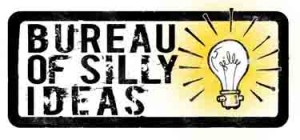 Besides the navicular studies, there have been a couple of studies other done on Tildren® in horses, which concluded it was effective for arthritis of the hock, and of the neck. That”s all fine, I guess, but I think it’s really curious that both involve a condition – arthritis – for which bisphosphonate drugs aren’t used in people. Never mind that tiludronate isn’t used in people anyway.
Besides the navicular studies, there have been a couple of studies other done on Tildren® in horses, which concluded it was effective for arthritis of the hock, and of the neck. That”s all fine, I guess, but I think it’s really curious that both involve a condition – arthritis – for which bisphosphonate drugs aren’t used in people. Never mind that tiludronate isn’t used in people anyway.
Some of the things for which Tildren® are being used are just silly. For example, on the show circuit, the drug is apaprently being used as some sort of bone “maintenance.” The idea – I guess – is that by by trying to stop bone from being removed by the osteoclasts, you end up with more bone, or stronger bone, or something. But that’s just silly. That’s not how bone works. For bone to be healthy, there has to have a balance of production and removal. If you skew the balance, bad things can happen, and, in people, where they use potent bisphosphonate drugs for real conditions, bad things (side effects) do happen.
 Side effects such as fractures and bone fragility are rare, they are reported with long-term use of bisphosphonate drugs. In addition, there is a study that shows that high concentrations of tiludronate are actually harmful to equine joint cartilage (CLICK HERE to see it). Side effects such as colic and acute kidney failure have also been reported as side effects in horses. In people, chronic pain is a reported side effect. Not that one should be scared of Tildren®t, it’s just that any drug that has an effect also has a potential side effect. In human medicine, side effects of bisphosphoate are well-understood, carefully monitored, and reported. In horses, not so much.
Side effects such as fractures and bone fragility are rare, they are reported with long-term use of bisphosphonate drugs. In addition, there is a study that shows that high concentrations of tiludronate are actually harmful to equine joint cartilage (CLICK HERE to see it). Side effects such as colic and acute kidney failure have also been reported as side effects in horses. In people, chronic pain is a reported side effect. Not that one should be scared of Tildren®t, it’s just that any drug that has an effect also has a potential side effect. In human medicine, side effects of bisphosphoate are well-understood, carefully monitored, and reported. In horses, not so much.
Here’s the bottom line. If you are giving your horse Tildren® you’re basically enrolling your horse in an experiment where no one is keeping track of the results. You’re using an old, fairly ineffective medication to treat conditions for which the drugs aren’t used in the species (human) where the class of drugs is most commonly used. If you’re using it as some sort of “maintenance” therapy, you’re going out on a limb which isn’t attached to a tree. You’re using an expensive, unapproved medication based on the idea that your horse’s problem probably involves the bone, and that the drug probably does something to bone. And that may be OK with you – but I think that at least you should know.
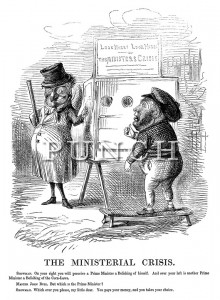 In fact, currently, the use and prescription ot Tildren® in the US has pretty much boiled down to the old line, “You pays your money and you takes your chances.”* As you might imagine, I’m not a big fan of the way that the drug has been used. Now that the two drugs have been approved in the US, I’m sure we’ll get a lot more of them dumped into horses. That’s not to say that there won’t eventually be some good use for bisphosphonate drugs, but we’re almost certainly not there yet. Even in the US, it’s still only approved for the treatment of navicular disease. But you can be sure it will be used for a lot more than that.
In fact, currently, the use and prescription ot Tildren® in the US has pretty much boiled down to the old line, “You pays your money and you takes your chances.”* As you might imagine, I’m not a big fan of the way that the drug has been used. Now that the two drugs have been approved in the US, I’m sure we’ll get a lot more of them dumped into horses. That’s not to say that there won’t eventually be some good use for bisphosphonate drugs, but we’re almost certainly not there yet. Even in the US, it’s still only approved for the treatment of navicular disease. But you can be sure it will be used for a lot more than that.
Medicine doesn’t progress nearly as fast as our hopes for it, and our hopes often outpace common sense. So it goes.
* The origin of this phrase is British, probably Cockney. The Oxford English Dictionary references an 1846 Punch magazine cartoon entitled ”The Ministerial Crisis.” The weekly humor and satire magazine has a cartoon or showman telling a customer, ”Which ever you please, my little dear. You pays your money, and you takes your choice.” And here’s the cartoon, too!

